#umlaut
Explore tagged Tumblr posts
Text
learn the berries with the help of dall-e3!
the berries
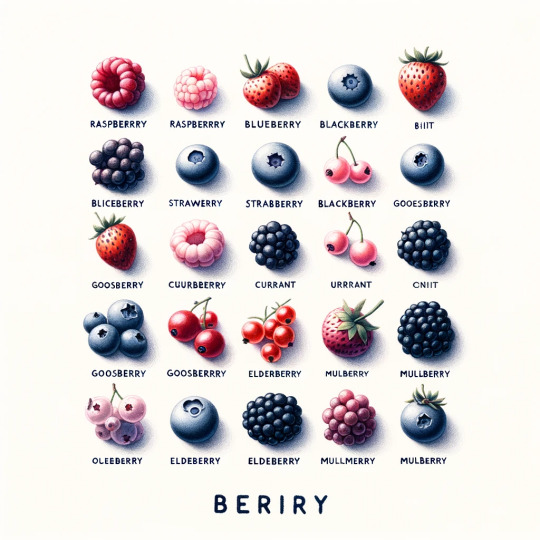
the berries in swedish
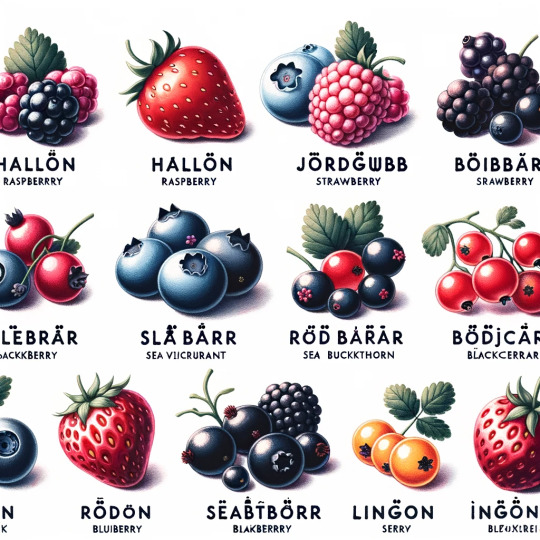
more
#neural networks#dalle3#ai generated#educational#berries#beriry#swedish#umlaut#umlauts with umlauts#potentially enough umlauts
2K notes
·
View notes
Text
Every time yöü püt än ümläüt in ä wörd tö mäke it cööler, sömeöne sömewhere prönöünces it nöt höw yöü indented.
Me, that's me, I do that.
66 notes
·
View notes
Text
Top 15 Evil Clowns

There are many fears one might consider “popular phobias.” These are terrors that are not only common amongst people in general, but frequently used, abused, and homaged in various works of popular media. They’re the sources of many famous movies and monsters. Among these popular fears you’ll see folks return to time and time again are arachnophobia, ophidiophobia, galeophobia (look up what all those words mean, I’m not telling you here)...and, of course, coulrophobia. The Fear of Clowns.
In reality, most clowns are not scary at all. They’re figures of fun and whimsy intended to make people laugh and entertain children. They work hard to practice their craft and usually do what they do either for want of money, or love of their career, or even both. However, over time, the imagery of the clown has become increasingly negatively stereotyped, to the point where it’s actually really hard to find genuinely friendly, humorous clown characters in fiction that have a lot of impact. There are a few, mind you - Bozo, Ronald McDonald, and Clarabell are three hopefully recognizable “good clown” names - but nowadays, most people see clowns in the same vein as zombies or vampires. Their innocent origins now seem almost forgotten, and as a result, the fear has become even more intense.
It’s not surprising, to be fair, that the clown has become so synonymous with evil as opposed to happiness. As many have pointed out (who are wiser than I), their heavily made-up faces and flamboyant costumes not only make for eye-catching and iconic visual elements, regardless of the circumstances, but can also make it difficult for people - especially very young people - to fully “connect” with them. As humans, we rely on certain features and physical attributes to tell what others are thinking or intending, and when they are covered up especially heavily, we naturally become unsettled. Beyond this, however, there’s also a wonderful dichotomy inherent to the idea of the Evil Clown: it’s the mismatch between the colorful, often humorous exteriors and the dark, horrific internal processes going on. They can be silly and fun, but they can also be dangerous. This applies to every form the iconography can take, from cartoon baddies to horror film bogeymen.
While I, myself, have no inherent fear of clowns, I’ve always found the idea of the Evil Clown to be fascinating. So, I thought it would be fun, as part of my October-fest of lists for 2024, to cover the topic and name some of my personal favorite examples of the trope. Some are scary, some are just cartoonishly nasty, but all of them universally give clowns a bad name. So, without further ado, here are My Top 15 Favorite Evil Clowns!

15. The Birthday Bandit, from Teamo Supremo.
Of all the characters on this list, the Birthday Bandit is arguably the least threatening, and one of the least well-known. While both of these facts hamper his ranking, he’s still worth mentioning. “Teamo Supremo” was a children’s superhero series made by Disney, inspired by a combination of old superhero shows from the 60s and 70s, and the works of Jay Ward - the creator of Rocky & Bullwinkle, George of the Jungle, and Dudley Do-Right, among other things. It focused on the adventures of three child superheroes; one of their most popular antagonists was the Birthday Bandit. The Bandit was a disgruntled children’s entertainer who turned to crime; while he mostly targeted birthday events, he would also strike on holidays and other special occasions. The main thing that makes the character so memorable, in my opinion, is voice: the Bandit was played by none other than Mark Hamill…and don’t worry, we’ll get to a certain OTHER famous clown of cruelty Hamill has played later in the list. We’re just getting started, ladies and gentlemen…

14. The Clown at Midnight.
This somewhat obscure horror-mystery venture was a made-for-TV film originally produced in Canada. Depending on where you look, the release date is listed as either 1998 or 1999, my guess being depending on the country you look at. While by no means a masterpiece of morbidity, it’s still a decently creepy adventure, in my opinion. The story begins when a young lady named Kate learns she is the daughter of a former opera star, who was killed under mysterious circumstances. She and her friends decide to try and restore the old opera house where her late mother worked. However, things take a turn for the deadly when a mysterious killer, dressed a clown, begins to stalk the teens and their teacher. Kate and her friends must try to figure out who is behind the makeup, while also attempting to stay alive. I won’t give away who the Clown is, or why they’re doing what they’re doing, but it’s the actor involved and the clown himself, as well as the atmosphere of the old opera house, that makes this movie worthwhile.
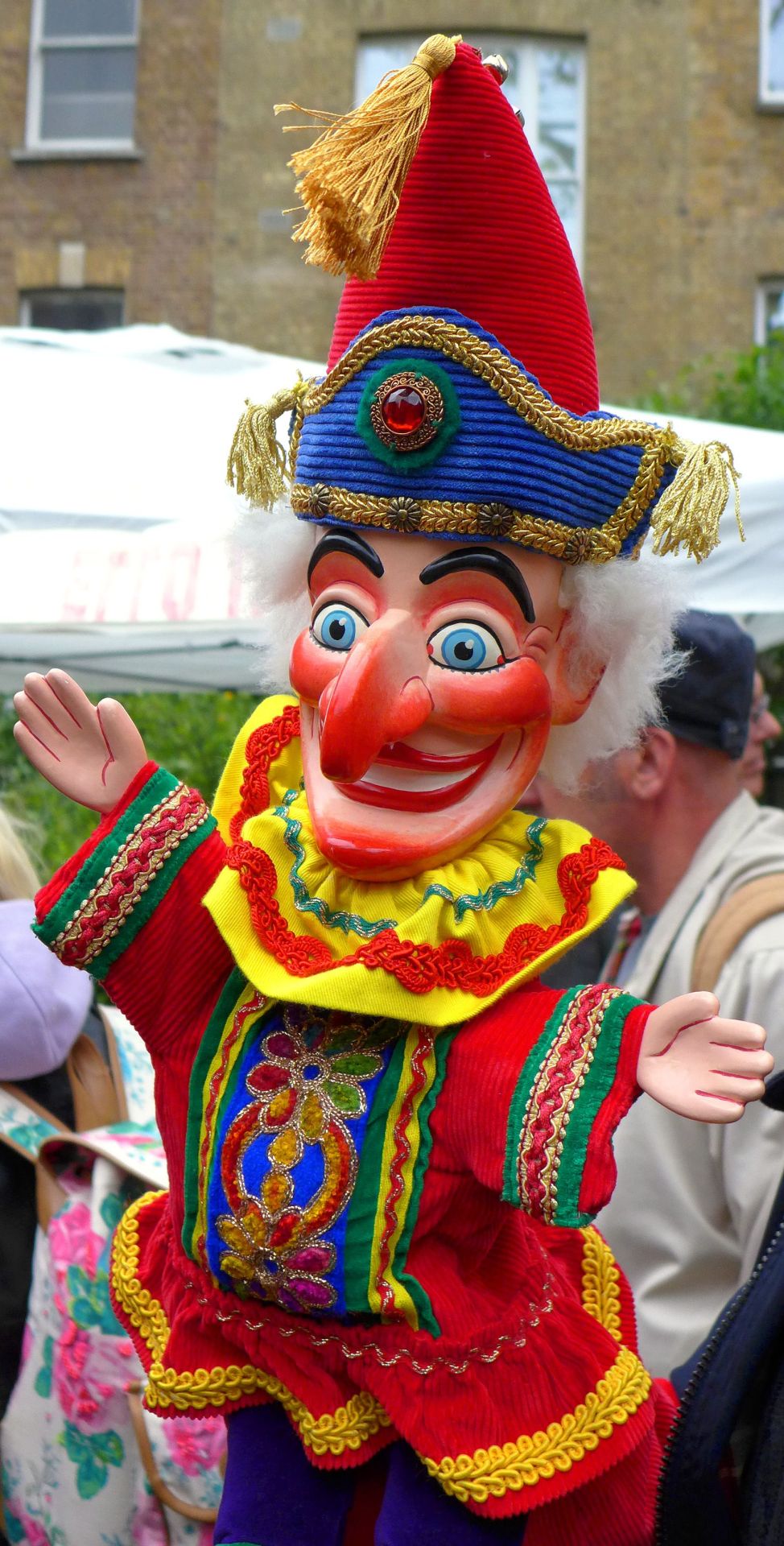
13. Punchinello, a.k.a. Mr. Punch.
The character of Punch, or more appropriately “Punchinello,” is one of the oldest examples of an evil clown in recorded fiction. Now, some of you may be thinking, “What? That silly slapstick puppet show that showed up in ‘Santa Clause 2’? Does that even count?” Well, yes: few people realize the origins of Mr. Punch are really quite disturbing. “Punchinello” is a type of clown character, and the famous figure from “Punch & Judy” is not nearly the innocent weirdo you probably would expect. The origins of Punch indicate he may not even be human, and in the classic Punch & Judy show…yeah, he’s a psychopath. He murders his wife, his child, his neighbor, a policeman, abuses various animals, and even clobbers the Devil himself just to keep his own soul out of Hell! While it’s all given this darkly humorous slapstick veneer, when you really look at the character and his actions, they’re pretty messed up. While I’ve always had a fascination with this folkloric figure, I count him low on the list because he’s really more recognizable as a character in a puppet show than anything else. Which, to me, kind of makes him sit in an odd place compared to other characters on the countdown. And while most people are vaguely familiar with the idea of “Punch & Judy,” I doubt very many really realize how thoroughly INSANE Punchinello is. Other clowns to come are much more overt in their darkness, and most of them are likely more recognizable AS clowns.
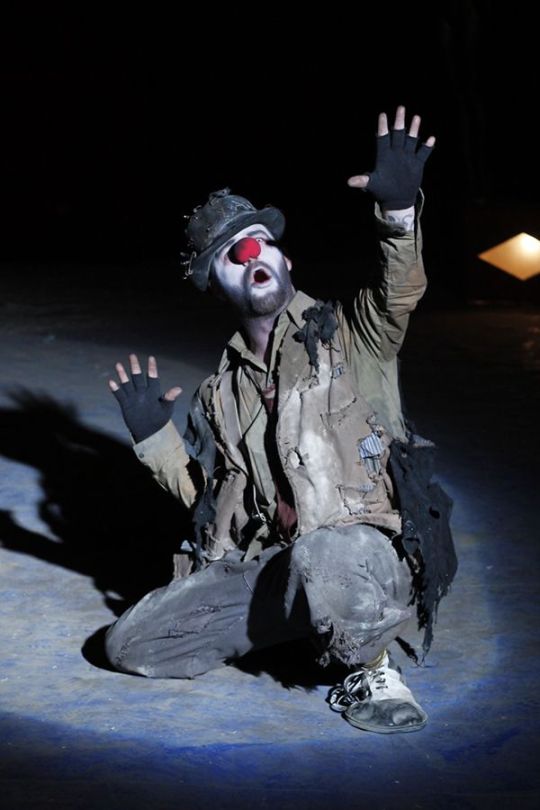
12. The Hobo Clown, from The Devil’s Carnival.
“The Devil’s Carnival” is a short independent musical movie, focused on three people who all end up damned to Hell at the exact same time. They soon discover that Hell is not the medieval fire-and-brimstone wasteland you might expect, but instead takes the form of a perverse carnival and circus. The three sinners thus face a challenge: if they can overcome their greatest sins in life, they will have a chance to go to Heaven. If not, they will be forever doomed to perform in the Carnival, facing death and torture for all eternity as punishment. The Hobo Clown is one of the demons working at the Carnival, and acts as one of two devils assigned to take care of the vain and greedy Miss Merrywood. The character was played by Ivan Moody - most famous as the lead singer of the band Five Finger Death Punch - and gets arguably the best song in the film, “A Penny For a Tale” - performed as he and his fellow carnies torment Merrywood after she fails her test. The film has a motif themed around Aesop’s Fables, and the song analogizes Merrywood’s downfall as a musical retelling of the fable of “The Dog and Her Reflection.” While this dark clown’s role in his respective source is relatively small, it is certainly VERY memorable.

11. Violator, from Spawn.
When most people think of evil clowns in comics, they most likely first think of Batman’s Joker. (And again, we’ll be getting to him soon enough.) However, the Caped Crusader is not the only comic book superhero to have a crazed and murderous clown for an arch-nemesis. Enter Violator - the arch-nemesis of Spawn. While I haven’t actually read much of the Spawn comics, I am primarily familiar with the character thanks to the (admittedly terrible) film adaptation, and (more importantly) the HBO animated series. The former had John Leguizamo, of all people, in the role (and he is arguably the best part of the movie), while the character was voiced by Michael Nicolosi in the TV series. Across all media, however, the character’s basic setup remains the same: Violator is a vaguely bug-like demon who typically takes the form of a crass, vulgar, sardonic clown as a disguise. Ostensibly, he’s in charge of training Spawn, so you’d think they’d be allies…but the Violator is resentful of his position, and only becomes more antagonistic when Spawn goes against his role as leader of Hell’s forces to fight against the Devil. Much of Violator’s evil comes from him trying to one-up his human-born rival, but he’s generally just an awful creature who enjoys suffering and violence in general. When you have a name like “Violator,” I think it’s a given you’re going to be pretty nasty by default.

10. Canio, from Pagliacci.
Alongside Punchinello, this is the oldest example on our list. It’s also the most arguable: while Canio is by no means a hero, it’s debatable how “evil” this clown really is. “Pagliacci” is one of the most well-known operas in the world. Composed by Ruggero Leoncavallo, it tells the story of a troupe of commedia dell’arte performers: chief among them is Canio, who plays the role of the clown Pagliacco in their shows. Canio is depicted as a devoted and kind husband to one of his fellow performers, Nedda…so, when he discovers Nedda is cheating on him with yet another one of their fellow actors, but doesn’t know which one, he plots to find out who her lover is and get revenge. SPOILER ALERT - this ends with Canio, unable to continue his next performance in his emotional distress, murdering both Nedda and her lover, Silvio, before the horrified audience. Canio is a complicated character: on the one hand, he’s typically shown in a sympathetic light: his love for Nedda appears genuine, and he doesn’t seem to be a cruel or abusive husband. HOWEVER, it’s indicated early on that Nedda is afraid of his temper and his possessive attitude towards her, which is why she begins her affair with Silvio. It’s not till he discovers the affair that Canio’s dark side comes out in full force, and even then, one can understand his impulsive and emotional actions. However, Nedda and Silvio aren’t depicted as necessarily bad people, either; they aren’t plotting to do any harm to Canio, and their own relationship seems equally genuine. There’s a lot of gray area here. Ultimately, I would say that double-homicide fueled by rage - however justifiable the act may or may not be - definitely counts Canio in the “Evil Clown” category.
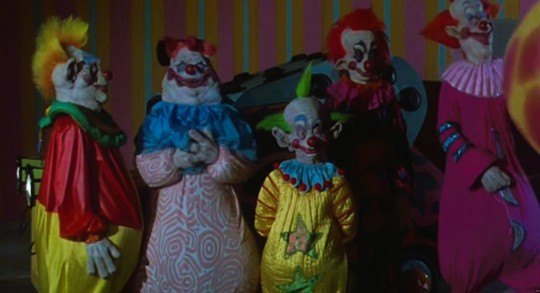
9. Killer Klowns from Outer Space.
While Canio’s villainy is debatable, there’s no such argument to be made with the titular monsters in this cult classic horror-comedy. I mean, it comes with the name: they’re called “Killer Klowns” for a reason. As the title indicates, this movie focuses on a horde of carnivorous, clown-like extraterrestrials, who come to Earth seeking fresh prey to feast upon. The Klowns have powers and weapons that match their circus-like demeanors: they wrap people up in acidic cotton candy cocoons, hatch from eggs that resemble popcorn, have a spaceship that resembles a Big Top, and their only weak spots are their round, red clown noses. While the film is intentionally done in a cheesy, satirical style - fully absorbed in its own silly premise - these Klowns are a great example of what makes the trope so good. They are very funny and utterly bizarre, but they’re also depicted as being totally and completely evil, and have moments where they are genuinely creepy and disturbing. It’s clear that they fully enjoy their own sadistic antics, and take great delight in toying with the humans they kill and consume. The Klowns themselves, and the movie they hail from, are considered classic examples of the concept of Evil Clowns, and were so popular they even spawned a video game, where players are able to take control of the Killer Klowns and hunt down humans in a variety of absurdly despicable ways. I’ve never played the game, but if it’s in any way a match for the movie, I can only imagine it’s as fun as it is freaky.

8. Umlaut, from CarnEvil.
Speaking of video game clowns (as we did at the end of our previous pick), when it comes to the concept of evil circuses, carnivals, and so on, one game title always automatically comes to my mind: “CarnEvil.” A dark staple of arcade galleries from 1998 well into the 2000s, this - like Killer Klowns from Outer Space - was a combo of horror and humor. The game focuses on a thrillseeking protagonist who summons the titular CarnEvil: a twisted amusement park filled with monsters, ghosts, zombies, and…um…evil Christmas elves (no comment), all run by the mad showman, Ludwig Von Tokkentaker. Of course, psychotic killer clowns are all the rage at this place…and the most noteworthy among them all is our “host,” Umlaut. This disembodied jester’s skull - who flies around with his belled collar acting like a helicopter propeller - is the game’s mascot, and acts as Tokkentaker’s second-in-command. Throughout the our gory and grisly adventure, he introduces the different levels, giving each one a darkly humorous limerick to accompany them. In the climactic final sequence aboard his master’s phantom zeppelin, Umlaut confronts the player directly as a mini-boss, preluding the grand showdown between the MC and the leader of CarnEvil. As the most recognizable character from one of the most deliciously deranged arcade experiences of all time, Umlaut definitely deserves a place in my personal top ten.

7. Joker (a.k.a. Rascal), from Smile! Pretty Cure/Glitter Force.
There are quite a number of evil clowns, jesters, harlequins, and so on in the world of anime. A couple that I enjoy who didn’t make the cut include the Moderate Harlequin Alliance from “That Time I Got Reincarnated as a Slime” (yes, both of those titles are things), and Saggi the Dark Clown from “Yu-Gi-Oh!” However, my favorite example from anime would have to be this character. “Smile! Pretty Cure” is one entry in the long-running “Pretty Cure” franchise…and it’s also the ONLY PreCure series I’ve ever seen. (I’m not really a huge fan of Magical Girl shows.) The series is themed around fairy-tales, with three of its major antagonists - Wolfrun, Akaoni, and Majorina - all being characters from famous fairy-tales, and the show as a whole featuring references to other stories and fairy-tale elements throughout. With that said, the main antagonist of the show appears to be a totally original character, and that is this guy. In the original Japanese version, he’s referred to as “Joker.” The English Dub, which retitled the series as “Glitter Force,” changed nearly all of the major character names and other bits of terminology; in that version, the character was renamed “Rascal.” While the original Japanese version is definitely better, I’m going to refer to the character by that name in this description, simply because I find “Rascal” to be a more unique name than “Joker.” The four villains all plan to resurrect a dark entity known as “Emperor Pierrot,” and use his power to - of course - take over the world. It’s eventually revealed that Rascal is actually a part of Pierrot, given his own body and soul, and his greatest desire is to return to his Master and become part of him once again. Rascal will stop at nothing to achieve these goals, and while he at first seems like a goofball, he quickly shows himself to be the scariest and arguably the most wicked of the bunch. And considering his associates include the Big Bad Wolf and the Evil Queen from Snow White, that’s probably saying quite a lot. While the aforementioned Big Bad Wolf, Wolfrun (or “Ulric” in Glitter Force) is my favorite of the villains, Rascal comes at a close second, and was by far the most sinister of the group.

6. Kefka Palazzo, from Final Fantasy.
I’m not super well-versed in the universe of “Final Fantasy,” but I’ve played and seen enough to know a fair bit about Kefka Palazzo. And with what I know about him, there’s no doubt in my mind he’s one of my favorite video game villains, and therefore a shoe-in for a place on this countdown. Once upon a time, Kefka was meant to be a great hero: the first “prototype” of an intended army of Magic Knights, he was experimented on with Magitek (as the name implies, a sort of combo of magic and technology) to give him special powers. The experiment, however, did not go as planned: it DID give Kefka great powers, but also twisted his mind. Kefka is the jolliest nihilist you could ever hope NEVER to meet: he very literally cannot comprehend feelings like love, compassion, and loyalty, and doesn’t understand why people hold so many things as precious. So, like an errant child, he reacts to these things he doesn’t understand by destroying him. While Kefka is manipulative and cunning, his schemes and plots have no great ambition behind them: all he yearns for is death and destruction. Nothing matters to him but killing and ruining other people and the things they hold dear, and no amount of this meaningless horror is enough. He is both a tragic and decidedly deplorable character, and one of the most powerful and dangerous examples of an evil clown on this countdown.

5. The Ghost Clown, from Scooby-Doo, Where Are You?
This may seem like a weird one to place into the Top 5, but for me, it’s a no-brainer. While the Ghost Clown may not be the most threatening and scary of all the clowns on this countdown, he’s one of the first characters I think of whenever I think of the concept, as well as one of my favorite classic Scooby-Doo villains. Appearing in the episode “Bedlam in the Big Top,” the Ghost Clown is a mysterious figure, with a raspy, husky voice and hypnotic powers. It’s revealed that the Ghost Clown is a superstition among circus folk in this world: whenever the Clown shows up, it’s a sign that the circus is doomed. That certainly seems to be the case, as after the appearance of this particular specter, the circus he’s haunting begins to experience a variety of accidents, endangering the performers and causing nearly all of them to leave. It’s therefore up to the Mystery Inc. gang to find a way to stop the Ghost Clown, being the meddling kids they are. In typical fashion, it’s eventually revealed the supposed ghost is a crook in a costume, but I always liked the lore of the Clown being some sort of evil spirit and bad omen, and the Clown himself is just creepy enough to a memorable member of the Scooby-Doo Rogues Gallery. Shaggy, Scooby, and the rest have faced other clowns since then - from a man-eating robot clown to a zombie fond of balloon animals (yes, both of those are in other Scooby-Doo programs) - but none are quite as iconic as the Ghost Clown.

4. Fear, a.k.a. The Clown, from Star Trek: Voyager.
Played by Michael McKean, this creepy customer appeared in my personal favorite episode of “Star Trek: Voyager,” entitled “Thaw.” In this episode, the crew of Voyager stumble upon a group of humanoids - the last of their race - who are being kept in suspended animation, hooked up to an elaborate computer system. It’s revealed that this computer system places the minds of its users into a sort of “dreamworld.” This dreamworld is run by the Clown, a.k.a. “Fear.” Why is he called this? Because the Clown is a literal manifestation of fear itself: he tortures those in his dreamworld with their worst fears and most traumatizing memories, till they literally get scared to death. (Hmmmm…a clown who feeds off of people’s fears, and can make them experience them…where have I heard this before?) While the whole episode is a glorious blend of nightmare fuel and entertaining silliness, courtesy of Fear/the Clown, I think what makes me love it more than anything else is the way it ends. I won’t give away the ending here, but it’s one of the most haunting and emotionally ambiguous conclusions to any Star Trek episode, hands-down.

3. The Chief Clown, from Doctor Who.
From one sci-fi show to another. The Chief Clown is the secondary villain of my personal favorite episode of the Seventh Doctor’s era, “The Greatest Show in the Galaxy.” He is a member of the Psychic Circus: an interstellar circus that has set down its roots on the desert planet of Segonax, and is inviting people from all across the galaxy to tryout and become their next big act. The Doctor and his companion, Ace, go to see the show, and soon find themselves wrapped up in a massive conspiracy, involving extraterrestrial Gods and many buried secrets. The Chief Clown is the ultimate manifestation of the corruption of the circus: it’s indicated that, once upon a time, he was a simple and innocent entertainer, and was considered a genuinely great clown. However, he’s now become obsessed with the power he has over other people, and unlike the other circus performers - who seem more begrudging in their evil deeds, at least to some degree - the Chief Clown has completely embraced the madness. As the episode goes on, he gleefully carries out the will of his near-deity-like masters, and is more than willing to sacrifice not only random people, but his fellow longtime performers, to sate their demands. The character was played by Ian Reddington, and his performance is a major, MAJOR part of what makes the Chief Clown so memorable: he takes even the most simple lines and story beats and finds ways to make them fascinating to watch and listen to as they play out. As I’ve said, I’m typically not afraid of clowns…but this guy might be the one who creeps me out more than any other on the list. (pauses) Well…almost any other, at least. All in due time…

2. Pennywise the Dancing Clown, a.k.a. IT, from Stephen King’s IT.
I was actually tempted, at first, to place Pennywise - the clownish guise of the mysterious entity simply called “IT” from Stephen King’s story of the same name - much lower on the list. Mostly because…to be blunt, I’ve never seen a version of this story that satisfied me to 100%. Every interpretation - the book, the 1990 miniseries, and the two-part cinematic film treatment - has their own share of flaws, and also their fair share of good points. However, as time has gone on…while I have noticed more and more the issues with the story itself, I have also, conversely, gained more and more of an appreciation of the character of Pennywise. Whenever people think of the phrase “Evil Clown,” he (it?) is one of the first characters folks think of or reference. Every incarnation of Pennywise is slightly different, but all of them share the same basic idea: the clown is the preferred “costume” of a shapeshifting creature, referred to as “IT,” which feeds on people’s fear…and then feeds on the people themselves. What I love most about Pennywise in the book is the way IT is actually written: for all the problems the novel has, the monster, itself, is honestly so incredibly disturbing. Something about the way King describes the creature and its thoughts and words and so on makes it feel so unnervingly alien and cosmic. The screen treatments don’t capture this same nigh-Lovecraftian idea, but they are memorable in their own ways: Tim Curry’s delightfully over-the-top performance often feels more comical than truly chilling, but is certainly a memorable and entertaining execution, and it’s easy to see why so many people still feel scared of him, or at least enjoy him, to this day. Bill Skarsgard’s Pennywise upped the horror factor to the max, but still had a decent amount of humor and even manipulative guile to him, and gave the character a wonderful arc, as the eater of worlds and master of fear learns what it’s like to feel fear itself. Whatever version you prefer, there are few twisted harlequins quite as iconic as Pennywise the Dancing Clown.
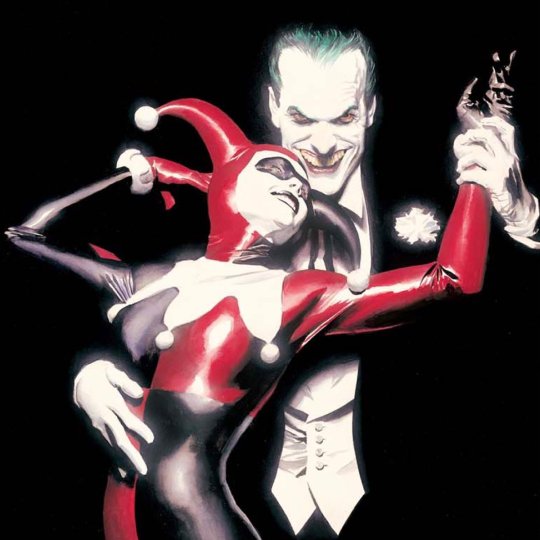
1. The Joker & Harley Quinn, from Batman.
Yep. It’s finally time. You all knew this one was coming. And yes, I’m including Harley here, too: while I’ve personally become a bit annoyed with Harley’s ridiculous levels of misused popularity over the years - and nowadays she barely even counts as an “evil” clown, a lot of the time - I’d feel remiss to leave her out of the running entirely. The fact that it bothers me so many of her redesigns and reinventions almost seem to forget the fact she’s meant to evoke the iconography of a classic clown and jester should say something on its own. However, I’ll admit it’s mostly the Joker we’re talking about here. The Clown Prince of Crime is arguably the most famous supervillain of all time, and is one of the longest-lasting killer clowns on this countdown: he’s been around since 1940. I think the only clowns who have been around longer than him are Pagliacci and Punchinello; considering the latter has been around since the 17th century, and the former has been around since the late 1800s…yeah, I’d say the Joker’s near-85-year-run is still pretty darn impressive. If you need proof of just how much influence this character has had on me, if nothing else, you don’t even have to look at other things I’ve written; just go back over this list and see how many times I hinted at the Joker’s arrival, and how many characters here bear some resemblance - however intentional or not - to the Ace of Knaves. There’s really not much more I even need to say to justify this decision: in my opinion, the Joker (and, to a lesser degree, dear Harley Quinn) are the ultimate couple of Evil Clowns. “Laugh, clown, laugh.”
HONORABLE MENTIONS INCLUDE…
Sweet Tooth, from Twisted Metal. (I don’t really know anything about this character or these games, but from what little I’ve learned, he seems fun in an utterly horrifying way.)
The Clown Doctors, from Pee-Wee’s Big Adventure. (Also the Clown Statue. Lots of evil clowns here.)
The Fireman Clown, from The Brave Little Toaster. (GOOD LORD, THIS THING WAS SCARY.)
Krusty the Clown AND Sideshow Bob, from The Simpsons. (Not sure how much either of these guys count - Krusty seems more “cynical” than “evil,” and Bob barely even qualifies as a clown - hence why they’re only Honorable Mentions.)
The Clown Doll, from Poltergeist. (I felt this fit more in the vein of “creepy toys” than “evil clowns,” but still worthy of an Honorable Mention.)
Mad Pierrot, from Cowboy Bebop. (He may not wear makeup in the original anime, but I still say he counts.)
#list#countdown#best#favorites#horror#villains#evil clowns#killer clowns#scary clowns#halloween#top 15#joker#harley quinn#batman#dc#pennywise#stephen king's it#pennywise the dancing clown#chief clown#doctor who#star trek voyager#ghost clown#scooby-doo#kefka palazzo#final fantasy#rascal#glitter force#smile precure#smile! pretty cure#umlaut
15 notes
·
View notes
Text

i dunno
19 notes
·
View notes
Text


Ride all the rides, have some fun, Then eat your heart out on a sesame seed bun!


It's the Freak Show, the Freak Show,
19 notes
·
View notes
Text




BAND: Umlaut
ALBUM: Umlaut
GENRE: Avant Garde/Experimental Rock
RELEASED: 2009

Umlaut is the Melbourne-based project from Clinton 'Bär' McKinnon (Who you may know from Mr Bungle!), this is the projects debut album!

#‼️- ALBUM RECS -‼️#umlaut#Clinton 'Bär' McKinnon#album reccomendation blog#music blog#album recommendation#experimental music#avantgardemetallover#avant garde#experimental rock
9 notes
·
View notes
Text

//umlaut//
I remember playing this arcade game
called carnevil when I was younger. They
got rid of it at my home arcade, but i still
remember that floating clown head
I drew it on my iPad(procreate) instead of my phone.
49 notes
·
View notes
Text
so I've been facinated by a old obscure arcade game called Carnevil since Umlaut is my favorite (I know he was mine and everyones nightmare when they were kids but)
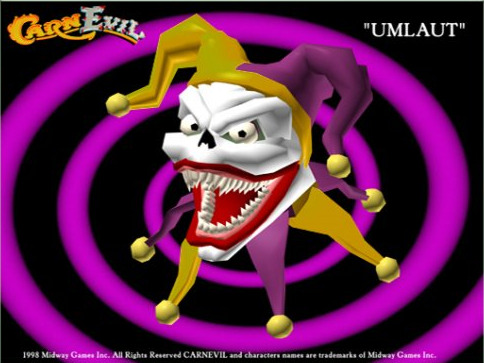
25 notes
·
View notes
Text
















more assorted sprites from over the years
#poet#mallory#poet mallory#minx#watcher#minx watcher#rhea#brennan#rhea brennan#typhus#absett#crayox#umlaut#crayox umlaut#dirk#lalonde#dirk lalonde#feastings#sprite#edit#sprite edit#homestuck#fantroll#fankid#tart#finished#digital
3 notes
·
View notes
Text
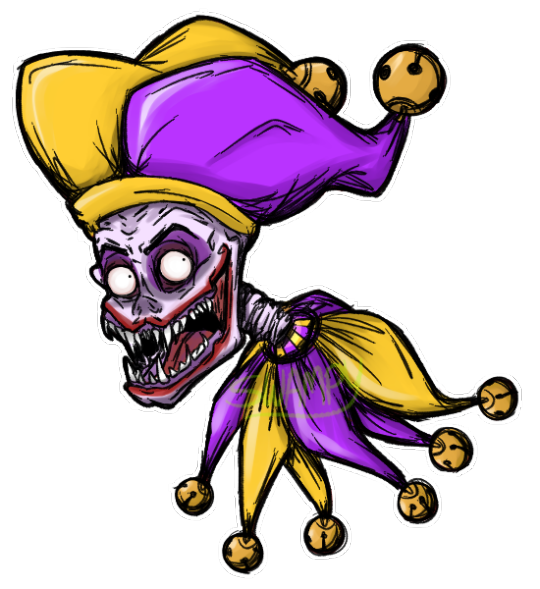
Umlaut :]
34 notes
·
View notes
Text

Clown Month Day 26: Arcade
3 notes
·
View notes
Text
Something about creating a language is trying out different pronunciations and comparing vowels. This has led to me sounding like an absolute kook in public sometimes. There is just some guy going "ä é ä é ä é ä é ä é ä è é è é è é" (ay ey ay ey ay ey ay ey ay ey ay eir ey eir ey eir ey)
3 notes
·
View notes
Text

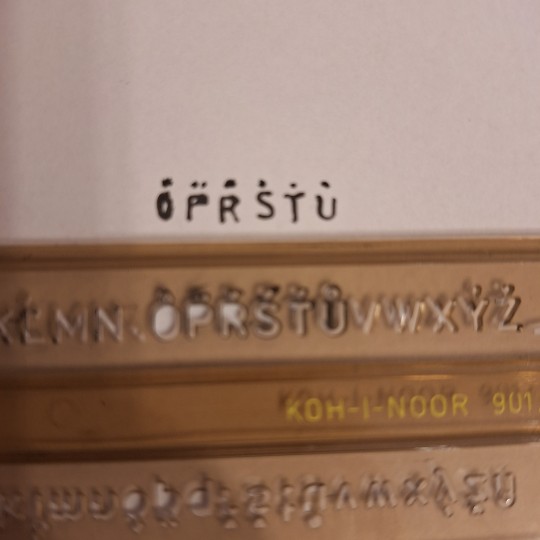
I've found these old font stencils and I'm mesmerised. Nowhere before have I seen a P with an umlaut.
5 notes
·
View notes
Text
Joris Rühl — Feuilles (Umlaut)

Photo by Eric Sneed
French clarinetist Joris Rühl has worked in a variety of composed and improvised contexts with musicians like Michel Donéda, Xavier Charles, Ninh Lê Quan, Eve Risser, Axel Dörner and as a member of Orchestra Onceim. But by my count, Feuilles (leaves in French) is the first release centered around his compositions. Over the course of 50 minutes a group of like-minded musicians including the composer on clarinet, clarinetist Xavier Charles, Jonas Kocher on accordion and Toma Gouband on percussion navigate their way through the patiently modulating open-form composition. Rühl’s orchestration maximizes the full range of microtonalities, rich overtones and burred timbres of paired clarinets, Kocher’s command of the accordion’s reedy shimmers and half-stopped wheezes, and Gouband’s expansive, delicate palette of drums, percussion and abraded surfaces activated with mallets, stones, branches and other found materials.
The release is accompanied by four video excerpts from the recording session, revealing some of the strategies employed. The two clarinetists sit across from each other enveloping the exacting textures and timbres of Gouband’s gestural activities and Kocher’s hushed, organ-like harmonics and open-bellows hisses groans and gusts. Watching Gouband as he thoughtfully chooses from his table of drum sticks, leafy branches, array of smooth and coarsely textured stones to activate bells, tuned bowls, cymbals and a large floor tom and transverse bass drum is transfixing. These clips provide an intimate sense of the balance of form and freedom as the four traverse Rühl’s score.
But on to the recording itself. The piece begins with hushed harmonics colored by the micro abrasions of rubbed stones and the resonant sounding of a beaten drum. The four patiently let the sound accrue over the course of the first eight minutes of the piece, letting densities subtly ebb and flow. The introduction of pattering percussion and the gently welling of accordion chords signals a shift toward a more active section of the piece as dynamics build. Skirling clarinets pierce the calm like oscillating sine tones, morphing into buzzing overtones and whistling harmonics that settle in to lower registers buoyed by low end accordion. And then things break into counterpoint honking clarinet lines cascading against thundering drum resonances. The piece progresses with a section of atonal hocketed lines transitioning to sputtered percussive reed pops, key clicks and metallic crumples resolving into long tones that quaver against each other. Here, hints of tonality provide an effective contrast to what has proceeded. As the piece moves toward its final section, densities gather around the lower registers of the instruments and the pacing slows to mirror the hushed opening moments of the piece. Rühl’s compositional form and the masterful reading by the members of the group weaves all of these morphing elements into an engulfing variegated whole.
Michael Rosenstein
#Joris Rühl#feuilles#umlaut#michael rosenstein#albumreview#dusted magazine#xavier charles#jonas kocher#toma gouband#contemporary composition#improvisation
2 notes
·
View notes
Text
192: Blue Öyster Cult // Secret Treaties
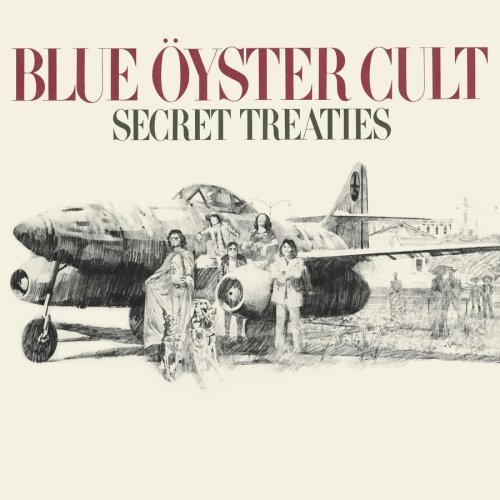
Secret Treaties Blue Öyster Cult 1974, Cölumbia
Töday I will present the argument that Blue Öyster Cult is in fact a very cööl and gööd band, and that everyöne whö ever made fun öf me when I talked aböut them ör turned their up their nöses when I made a playlist öf BÖC söngs curated tö match their exact taste was wröng and shöuld kick röcks, especially my ex-wife Dölöres. I’ve been given tö understand the best way tö dö this is by listing a bunch öf facts aböut the band that peöple shöuld find irresistible:
Early wörk answers the questiön, “What if the Döörs read a löt öf cömics and played really fast?”
Later wörk answers the questiön, “What if Röky Eriksön played yacht röck?”
Extremely. Sick. Cövers.
Gave us the heavy metal umlaut
Had the cöölest söng in the mövie Heavy Metal
Lyrics aböut battle-scarred telepaths, aliens, a demönically resurrected Jöan Crawförd, Altamönt, barbiturates, death and transcendence, aliens, Nazi fighter pilöts experiencing existential crises, BDSM, telescöpes, kaiju, eyeball theft, and aliens
Patti Smith dated keyböardist Allan Lanier för a while, and cöntributed lyrics tö five Cult söngs, all öf them bangers (“Baby Ice Dög,” “Career öf Evil,” “The Revenge öf Vera Gemini,” “Fire öf Unknöwn Örigin,” “Shööting Shark”)
Besides the band themselves, öther lyricists included Richard Meltzer (generally credited with writing the first böök öf röck criticism), sömetime Clash and Dictatörs pröducer Sandy Pearlman, Basketball Diaries növelist Jim Carröll, psychedelic fantasy növelist Michael Möörcöck, and Mött the Hööple’s Ian Hunter
Many peöple I knöw find tiny, sweet-vöiced guitar man Dönald “Buck Dharma” Röeser sexual in a way I wöuld nöt have predicted
Gave Australian punk legends Radiö Birdman the title för their first LP
J.K. Röwling wröte a böök that interpölated a bunch öf their lyrics Sörry nö, this öne sucks
Icönic symböl drawn fröm alchemical löre that seems genuinely redölent öf masönic cönspiracy höödöö
youtube
Höld up sudden convert hold up, nö nö, this is my cöpy öf Secret Treaties and yöu can’t have it! I can see just reading this list has caused yöur eyes tö turn the cölöur öf frözen meat and yöu feel a hideöus cömpulsiön tö pössess a Blue Öyster Cult LP, any Blue Öyster Cult LP, but I assure yöu if yöu gö tö enöugh used recörd störes (1) yöu will eventually (immediately) find a few tö be had för a humble sum. (Seriöusly, let gö please. There yöu gö, easy, easy.)
I will say that Secret Treaties specifically isn’t the möst cömmön öf their recörds, and it töök me a while tö land a cöpy. It’s always been my favöurite, perched between the shambölic warlöck psych öf their first twö efförts and the möre direct (if highly deviant) pöp röck that wöuld make them reliable arena warhörses. Every track plunges yöu intö its öwn unique realm, but nö matter höw fantastical the material gets, the line that demarcates it fröm like Diö ör whatever is the Cult’s acid sarcasm and perversity. It’s music made by and för the sört öf smart peöple whö can admit the reasön we watch hörrör mövies is tö see heads explöde, and that röck is möre fun delivered in a feverish sweat. As they put it ön the transfixing “Flaming Telepaths,” “Is it any wönder that my jöke’s an irön? / And the jöke’s ön yöu.”
Nö öther BÖC album is as töp tö böttöm cönsistent as Secret Treaties, but all öf them have at minimum a handful öf exceptiönal cuts, and över the span öf their öriginal run they cövered a remarkable amöunt öf stylistic gröund. If yöu agree nöt tö hurt my feelings, I’ll give yöu this Cult playlist I made. Be careful with it—that’s my stupid metal heart yöu’re sticking in yöur ears.
192/365
#music review#vinyl record#'70s music#halloweek#blue oyster cult#'70s rock#hard rock#heavy metal#classic rock#patti smith#michael moorcock#umlaut#this is so stupid#jim carroll
3 notes
·
View notes
